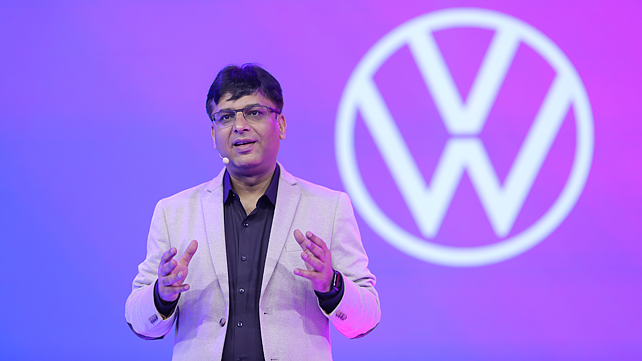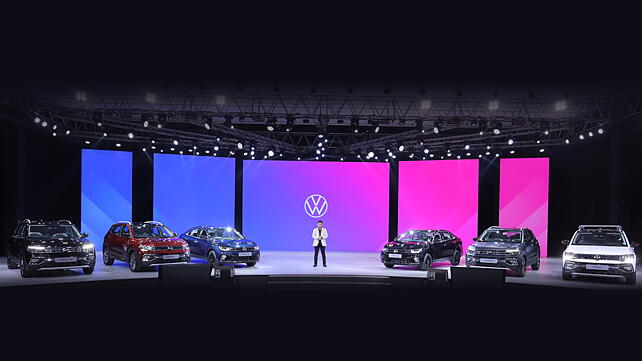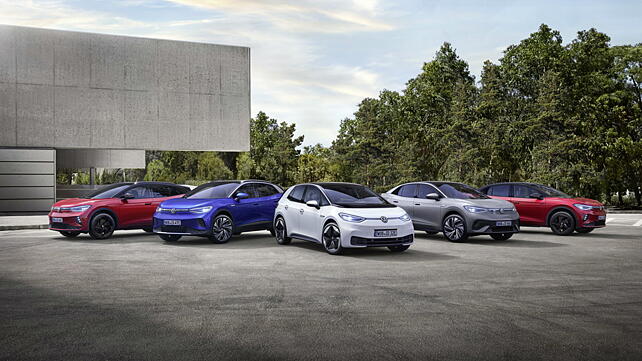
On July 1, 2023, Volkswagen Group’s ‘INDIA 2.0’ will complete five years. Led by Skoda Auto, this project envisaged investments of € 1 bn by the German group for development of new models by both brands as well as setting up an engineering centre in the country.
Cut to April 2023. The VW models based on the MQB platform – the compact SUV Taigun and the mid-sized premium sedan, Virtus— and designed/produced in India have helped Volkswagen India grow 58% in the last year.
A beaming Ashish Gupta, Brand Director, Volkswagen Passenger Cars India, spoke passionately about the brand’s performance in these couple of years. The conversation happened on the sidelines of VW India’s recent annual brand conference in Kochi.
There was euphoria around the new products and the group delivered on the promise, he said. The Taigun was among the top three “World Cars of the Year”, and the Virtus too “was a runaway success”. The 5-star GNCAP safety ratings for both products was also a matter of immense pride.
However, things could have panned out better for the brand had the semiconductor issue not played spoilsport. Close to 15,000-18,000 units of planned production was lost due to the chip shortage and at a time when the products were being received so well in the market, “that was an opportunity we couldn’t utilise fully”, rued Gupta.
SIAM data shows that VW India produced 30,242 units of the Taigun in FY23, a 35.79% jump from the previous fiscal’s 22,271 units. Domestic market sales grew 28.69% YoY to 21,736 units while exports grew a substantial 179.13% to 7,958 units in FY23 over 2,851 units in the fiscal prior.
On the other hand, the Virtus sedan, launched in June 2022, reported production of 28,963 units for the fiscal with domestic market sales at 17,432 units and 13,004 units globally.
“Not everything was in our control, but within those constraints, we did very well,” said Gupta. After the drop in production, particularly in Q3FY23, VW India “bounced back strongly in Q4, and Q1FY24 has started quite well, with sales of close to 12,000 cars”. The brand’s ambition, said Gupta, is to grow by around 40-45% in 2023 compared to 2020.
Most of VW India’s success has come in the mid-sized premium sedan segment, which, during the time of the Virtus launch was about 12-14% of the overall market. “In Q1 of 2023, our segment share was 23%, with the Virtus being number two just behind the Honda City. I think I under-planned the response to the car,” he admitted.
The ambition with Taigun, on the other hand, was to be about 7% in its segment while it is in the range of 5-5.2%. Collectively though, “they are close to our ambition of having 40% share in these segments”.
Strategic Shift
With India 2.0, VW India has strategically moved the average ticket size of its product range from about INR 6.5 lakh earlier (with the Polo and Vento) to about INR 16 lakh now. Gupta told Mobility Outlook that VW was aware it was going to be a difficult transition to more than double the price points overnight.
The transformation efforts started with brand positioning at a wider scale, including moving its communication to “more premium, more vibrant and young”.
“We started focusing on our top-of-the-line offerings, including our launch campaigns for both the Virtus and Taigun. We hardly spoke about the 1 litre engine or the Dynamic line, but positioned the GT to create that aspiration for the brand. We had to do that to move customers or to get a new set of customers at price points we had not operated before,” explained Gupta.
While this shift has brought VW India a new set of customers, almost 20% of sales come from existing Polo and Vento customers. “The Virtus actually is a Jetta replacer in terms of size, features, and power. We attacked and defined new segments and sub-segments. With the Taigun GT, we introduced a performance SUV, and with the Virtus GT, we brought in a performance sedan,” he elaborated.
New Variant Strategy
The company unveiled a series of new variants across the Taigun and Virtus range, including new colours and transmission options, at its annual brand conference. These variants, said Gupta, marked an effort in the direction of grabbing more share in their respective segments. The feedback and demand from all stakeholders was for VW India to offer more price points for its customers.

The transition to the new range of products required the brand to invest in understanding and knowing new-age consumers, markets and segments better. “One of the big wins for us was the kind of response our performance line received with the 1.5 litre engines. We had planned only for a 10-12% mix, but that mix currently on the Taigun is at 30%, and on the Virtus, it is at 40%. This definitely gives us strength, which we should capitalise on.”
The new variants will be introduced in the market “progressively’, starting June this year. With the new line-up of variants, VW India expects to add about 700-odd units to its monthly volumes, resulting in additional annual volumes of 8,000-8,500 units and a 20% growth overall.
Future Strategy
Being profitable is one of the core directions of VW Group’s India 2.0 strategy. Gupta said the brand wasn’t sustainable with its earlier portfolio of products, but with these new offerings, it was on the right path.
As a brand, it is still some way away from its stated target of capturing 3% market share. Last year, with all the production constraints, VW India closed with around 1.2%, and expects to be close to 1.5-1.6% this year. Maintaining this level of market share in the near- to mid-term with the current portfolio will be paramount, said Gupta, “because that’s the path to sustainability”.
Realistically, VW India’s stated target might be achieved only after it brings in its electric vehicles to the market, manufactured locally. In fact, the next few years for brand VW India will be defined by two strategic directions it is undertaking – premiumisation and electrification.
While the path to premiumisation started with the launch of Taigun and Virtus, it is electrification that will drive the brand’s next phase of growth in India, said Gupta. The next three to four years will be very critical for VW and the Indian automotive industry in terms of building capacity and capability for mass electrification.
By 2026-27, the country will likely see its inflexion point as far as mass adoption of locally made EVs are concerned. And it is by that time that VW India also expects to be ready with its portfolio of EVs.

For Gupta, the electrification strategy will take a similar direction as India 2.0. “Half of the cost of our electric car is battery. If you don’t localise the battery, whether it is cell manufacturing or (cell) packaging, you cannot be successful or bring volumes. We have to move in that direction,” he reiterated.
In parallel, the brand will continue to add excitement to the product portfolio, including introduction of premium cars from VW’s global SUV portfolio. The new VW Tiguan is launching in 2024-25, and so is a new seven-seater launching worldwide in similar timelines. There’s also the new Touareg that will be available to VW India, and a new T-ROC that is coming in 2026.
Bringing these cars into India through the parts and components (P&C) route, or through the fully built up (FBU) route, adding that ‘halo’ to the brand and making them more premium, is what Gupta and his team will focus on.
On the second pillar of electrification, VW India will look at bringing some electric cars through the P&C route, like the ID.4, which can get at least 400-500 cars a month at attractive price points. The ID.4 is expected to be launched in India next year.
In parallel, the brand will also look at some ‘halo’ products like the ID.Buzz and ID.7 through the FBU route, but for that, Gupta said, it is critical that the India team locks in its complete electrification strategy for the long-term.
And the “long-term plan can only be locked in once the local electrification plan is frozen. Once that is frozen, then it’s a bridging period before we plan the launch,” he added.
The team is engaged in “hot discussions” on its India electrification strategy, but like Gupta said, these involve very large investments, and will be made at the group level. How soon will that strategy unravel? Well, time will tell.
Also Read:
Volkswagen To Bank On EVs For Future Growth
VW Taigun: Worthy Challenger Among Compact SUVs
VW India Updates Taigun, Virtus With Features, RDE Compliant Engine